- Home
- Edith Wharton
The Buccaneers
The Buccaneers Read online
Table of Contents
About the Author
Title Page
Copyright Page
Dedication
BOOK ONE
I.
II.
III.
IV.
V.
VI.
VII.
BOOK TWO
VIII.
IX.
X.
XI.
XII.
XIII.
XIV.
XV.
XVI.
XVII.
XVIII.
XIX.
BOOK THREE
XX.
XXI.
XXII.
XXIII.
XXIV.
XXV.
XXVI.
XXVII.
XXVIII.
XXIX.
XXX..
XXXI.
XXXII.
BOOK FOUR
XXXIII.
XXXIV.
XXXV.
XXXVI.
XXXVII.
XXXVIII.
XXXIX.
XL.
XLI.
Afterword
FOR THE BEST IN PAPERBACKS, LOOK FOR THE
Praise for Marion Mainwaring’s rendition of Edith Wharton’s unfinished classic THE BUCCANEERS
“Mainwaring’s version of The Buccaneers is a tour de force.... [She] deserves high marks for her ingenuity, novelistic skill, and critical intelligence.”—USA Today
“A sense of unobtrusive accuracy of tone and detail prevails throughout Ms. Mainwaring’s [writing].... It’s hard to imagine a writer better equipped to take on Edith Wharton.”
—The Wall Street Journal
“Mainwaring has finished the book in a style so identical to Wharton’s in spirit, vocabulary, sentence structure and rhythm that the transition should be imperceptible even to the original author’s most ardent admirers.”—Los Angeles Times
“A collaborative mastery of Wharton’s epigrammatic, unruffled prose... Mainwaring performs her literary impersonation almost flawlessly, faithfully imitating the essence of Wharton’s visual awareness, [and] her ability to convey an entire way of life in a few details.”—Chicago Tribune
“Mainwaring’s manners are impeccable, as if she belonged to the bygone world Wharton so piercingly describes.”
—The New York Observer
“Wharton loyalists should admire the seamlessness of Mainwaring’s finishing touches to this literary fragment, which, any way you slice it, is just plain delicious.”—Glamour
“Mainwaring has polished up [The Buccaneers], and the result is a masterpiece.”—Library Journal
PENGUIN BOOKS THE BUCCANEERS
Edith Wharton was born in 1862 into an old, moneyed American family. She married unhappily and then turned to writing, publishing more than forty books, including short stories, poetry, war reportage, travel writing, and her renowned novels, among them The Age of Innocence, The House of Mirth, Ethan Frome, and Summer. An expatriate, she died in France in 1937.
Marion Mainwaring has studied the work of Edith Wharton for several decades. Author of Murder in Pastiche, she lives in Boston.
PENGUIN BOOKS
Published by the Penguin Group
Penguin Group (USA) Inc., 375 Hudson Street, New York, New York 10014, U.S.A.
Penguin Books Ltd, 80 Strand, London WC2R ORL, England
Penguin Books Australia Ltd, 250 Camberwell Road, Camberwell, Victoria 3124, Australia
Penguin Books Canada Ltd, 10 Alcorn Avenue, Toronto, Ontario, Canada M4V 3B2
Penguin Books India (P) Ltd, 11 Community Centre, Panchsheel Park, New Delhi - 110 017, India
Penguin Group (NZ), cnr Airborne and Rosedale Roads, Albany, Auckland 1310, New Zealand
Penguin Books (South Africa) (Pty) Ltd, 24 Sturdee Avenue,
Rosebank, Johannesburg 2196, South Africa
Penguin Books Ltd, Registered Offices: 80 Strand, London WC2R ORL, England
The Buccaneers by Edith Wharton first published in
the United States of America by D. Appleton-Century, Inc., 1938
Completed edition first published in the United States of America
by Viking Penguin, a division of Penguin Books USA Inc., 1993
Published in Penguin Books 1994
Copyright © Marion Mainwaring, 1993
eISBN : 978-0-140-23202-8
http://us.penguingroup.com
This presentation of The Buccaneers is dedicated
to the memory of Edith Wharton
and
to Matthew Imrie
with special thanks
to Mary Pitlick, who identified the buccaneers,
to Nan Graham, to Christina Ward, and to David and
Dorothy Mainwaring.
M.M.
BOOK ONE
I.
It was the height of the racing season in Saratoga.
The thermometer stood over ninety, and a haze of sun-powdered dust hung in the elms along the street facing the Grand Union Hotel, and over the scant triangular lawns planted with young firs and protected by a low white rail from the depredations of dogs and children.
Mrs. St. George, whose husband was one of the gentlemen most interested in the racing, sat on the wide hotel verandah, a jug of iced lemonade at her elbow and a palmetto fan in one small hand, and looked out between the immensely tall white columns of the portico, which so often reminded cultured travellers of the Parthenon at Athens (Greece). On Sunday afternoons this verandah was crowded with gentlemen in tall hats and frock-coats, enjoying cool drinks and Havana cigars, and surveying the long country street planted with spindling elms; but today the gentlemen were racing, and the rows of chairs were occupied by ladies and young girls listlessly waiting their return, in a drowsy atmosphere of swayed fans and iced refreshments.
Mrs. St. George eyed most of these ladies with a melancholy disfavour, and sighed to think how times had changed since she had first—some ten years earlier—trailed her crinolined skirts up and down that same verandah.
Mrs. St. George’s vacant hours, which were many, were filled by such wistful reflexions. Life had never been easy, but it had certainly been easier when Colonel St. George devoted less time to poker, and to Wall Street; when the children were little, crinolines were still worn, and Newport had not yet eclipsed all rival watering-places. What, for instance, could be prettier, or more suitable for a lady, than a black alpaca skirt looped up like a window-drapery above a scarlet serge underskirt, the whole surmounted by a wide-sleeved black poplin jacket with ruffled muslin undersleeves, and a flat “pork-pie” hat like the one the Empress Eugénie was represented as wearing on the beach at Biarritz? But now there seemed to be no definite fashions. Everybody wore what they pleased, and it was as difficult to look like a lady in those tight perpendicular polonaises bunched up at the back that the Paris dress-makers were sending over as in the outrageously low square-cut evening-gowns which Mrs. St. George had viewed with disapproval at the Opera in New York. The fact was, you could hardly tell a lady now from an actress, or—er—the other kind of woman; and society at Saratoga, now that all the best people were going to Newport, had grown as mixed and confusing as the fashions.
Everything was changed since crinolines had gone out and bustles come in. Who, for instance, was that new woman, a Mrs. Closson, or some such name, who had such a dusky skin for her auburn hair, such a fat body for her small uncertain feet, and who, when she wasn’t strumming on the hotel piano, was credibly reported by the domestics to lie for hours on her bedroom sofa smoking—yes, smoking—big Havana cigars? The gentlemen, Mrs. St. George believed, treated the story as a good joke; to a woman of refinement it could be only a subject for pain
ful meditation.
Mrs. St. George had always been rather distant in her manner to the big and exuberant Mrs. Elmsworth who was seated at this moment nearby on the verandah. (Mrs. Elmsworth was always “edging up.”) Mrs. St. George was instinctively distrustful of the advantages of ladies who had daughters of the age of her own, and Lizzy Elmsworth, the eldest of her neighbour’s family, was just about the age of Virginia St. George, and might by some (those who preferred the brunette to the very blonde type) be thought as handsome. And besides, where did the Elmsworths come from, as Mrs. St. George had often asked her husband, an irreverent jovial man who invariably replied: “If you were to begin by telling me where we do!” ... so absurd on the part of a gentleman as well known as Colonel St. George in some unspecified district of what Mrs. St. George called the Sa-outh.
But at the thought of that new dusky Closson woman with the queer-looking girl who was so ugly now, but might suddenly turn into a beauty (Mrs. St. George had seen such cases), the instinct of organized defence awoke in her vague bosom, and she felt herself drawn to Mrs. Elmsworth, and to the two Elmsworth girls, as to whom one already knew just how good-looking they were going to be.
A good many hours of Mrs. St. George’s days were spent in mentally cataloguing and appraising the physical attributes of the young ladies in whose company her daughters trailed up and down the verandahs, and waltzed and polka-ed for hours every night in the long bare hotel parlours, so conveniently divided by sliding doors which slipped into the wall and made the two rooms into one. Mrs. St. George remembered the day when she had been agreeably awestruck by this vista, with its expectant lines of bentwood chairs against the walls, and its row of windows draped in crimson brocatelle heavily festooned from overhanging gilt cornices. In those days the hotel ball-room had been her idea of a throne-room in a palace; but since her husband had taken her to a ball at the Seventh Regiment Armoury in New York her standards had changed, and she regarded the splendours of the Grand Union almost as contemptuously as the arrogant Mrs. Eglinton of New York, who had arrived there the previous summer on her way to Lake George, and, after being shown into the yellow damask “bridal suite” by the obsequious landlord, had said she supposed it would do well enough for one night.
Mrs. St. George, in those earlier years, had even been fluttered by an introduction to Mrs. Elmsworth, who was an older habituée of Saratoga than herself, and had a big showy affable husband with lustrous black whiskers, who was reported to have made a handsome fortune on the New York Stock Exchange. But that was in the days when Mrs. Elmsworth drove daily to the races in a high barouche sent from New York, which attracted perhaps too much attention. Since then Mr. Elmsworth’s losses in Wall Street had obliged his wife to put down her barouche, and stay at home on the hotel verandah with the other ladies, and she now no longer inspired Mrs. St. George with awe or envy. Indeed, had it not been for this new Closson danger Mrs. Elmsworth in her present situation would have been negligible; but now that Virginia St. George and Lizzy Elmsworth were “out” (as Mrs. St. George persisted in calling it, though the girls could not see much difference in their lives)—now that Lizzy Elmsworth’s looks seemed to Mrs. St. George at once more to be admired and less to be feared, and Mabel, the second Elmsworth girl, who was a year older than her own youngest, to be too bony and lantern-jawed for future danger, Mrs. St. George began to wonder whether she and her neighbour might not organize some sort of joint defence against new women with daughters. Later it would not so much matter, for Mrs. St. George’s youngest, Nan, though certainly not a beauty like Virginia, was going to be what was called fascinating and by the time her hair was put up the St. George girls need fear no rivalry.
Week after week, day after day, the anxious mother had gone over Miss Elmsworth’s points, comparing them one by one with Virginia’s. As regards hair and complexion, there could be no doubt; Virginia, all rose and pearl, with sheaves of full fair hair heaped above her low forehead, was as pure and luminous as an apple-blossom. But Lizzy’s waist was certainly at least an inch smaller (some said two), Lizzy’s dark eyebrows had a bolder curve, and Lizzy’s foot—ah, where in the world did an upstart Elmsworth get that arrogant instep? Yes; but it was some comfort to note that Lizzy’s complexion was opaque and lifeless compared to Virginia’s, and that her fine eyes showed temper, and would be likely to frighten the young men away. Still, she had to an alarming degree what was called “style,” and Mrs. St. George suspected that in the circles to which she longed to introduce her daughters style was valued even more highly than beauty.
These were the problems among which her thoughts moved during the endless sweltering afternoon hours, like torpid fish turning about between the weary walls of a too-small aquarium. But now a new presence had invaded that sluggish element. Mrs. St. George no longer compared her eldest daughter and Lizzy Elmsworth with each other; she began to compare them both with the newcomer, the daughter of the unknown Mrs. Closson. It was small comfort to Mrs. St. George (though she repeated it to herself so often) that the Clossons were utterly unknown, that though Colonel St. George played poker with Mr. Closson, and had what the family called “business connections” with him, they were nowhere near the stage when it becomes a pleasing duty for a man to introduce a colleague to his family. Neither did it matter that Mrs. Closson’s own past was if anything obscurer than her husband’s, and that those who said she was a poor Brazilian widow when Closson had picked her up on a business trip to Rio were smiled at and corrected by others, presumably better informed, who suggested that divorcée was the word, and not “widow.” Even the fact that the Closson girl (so called) was known not to be Closson’s daughter, but to bear a queer exotic name like Santos-Dios (“the Colonel says that’s not swearing, it’s the language,” Mrs. St. George explained to Mrs. Elmsworth when they talked the newcomers over)—even this was not enough to calm Mrs. St. George. The girl, whatever her real name, was known as Conchita Closson; she addressed as “Father” the non-committal pepper-and-salt-looking man who joined his family over Sundays at the Grand Union; and it was of no use for Mrs. St. George to say to herself that Conchita was plain and therefore negligible, for she had the precise kind of plainness which, as mothers of rival daughters know, may suddenly blaze into irresistible beauty. At present Miss Closson’s head was too small, her neck was too long, she was too tall and thin, and her hair—well, her hair (oh, horror!) was nearly red. And her skin was dark, under the powder which (yes, my dear—at eighteen!) Mrs. St. George was sure she applied to it; and the combination of red hair and sallow complexion would have put off anybody who had heard a description of them, instead of seeing them triumphantly embodied in Conchita Closson. Mrs. St. George shivered under her dotted muslin ruffled with Valenciennes, and drew a tippet edged with swansdown over her shoulders. At that moment her own daughters, Virginia and Nan, wandered by, one after the other; and the sight somehow increased Mrs. St. George’s irritation.
“Virginia!” she called. Virginia halted, seemed to hesitate as to whether the summons were worth heeding, and then sauntered across the verandah toward her mother.
“Virginia, I don’t want you should go round any more with that strange girl,” Mrs. St. George began.
Virginia’s sapphire eyes rested with a remote indifferent gaze on the speaker’s tightly buttoned bronze kid boots, and Mrs. St. George suddenly wondered if she had burst a buttonhole.
“What girl?” Virginia drawled.
“How do I know? Goodness knows who they are. Your pa says she was a widow from one of those South American countries when she married Mr. Closson—the mother was, I mean.”
“Well, if he says so, I suppose she was.”
“But some people say she was just divorced. And I don’t want my daughters associating with that kind of people.”
Virginia removed her blue gaze from her mother’s boots to the little mantle trimmed with swansdown. “I should think you’d roast with that thing on,” she remarked.
“Jinny! Now yo
u listen to what I say,” her mother ineffectually called after her.
Nan St. George had taken no part in the conversation; at first she had hardly heeded what was said. Such wrangles between mother and daughter were of daily, almost hourly, occurrence; Mrs. St. George’s only way of guiding her children was to be always crying out to them not to do this or that. Nan St. George, at sixteen, was at the culminating phase of a passionate admiration for her elder sister. Virginia was all that her junior longed to be: perfectly beautiful, completely self-possessed, calm and sure of herself. Nan, whose whole life was a series of waves of the blood, hot rushes of enthusiasm, icy chills of embarrassment and self-depreciation, looked with envy and admiration at her goddess-like elder. The only thing she did not quite like about Virginia was the latter’s tone of superiority with her mother; to get the better of Mrs. St. George was too easy, too much like what Colonel St. George called “shooting a bird sitting.” Yet so strong was Virginia’s influence that in her presence Nan always took the same tone with their mother, in the secret hope of attracting her sister’s favourable notice. She had even gone so far as to mime for Virginia (who was no mimic) Mrs. St. George looking shocked at an untidy stocking (“Mother wondering where we were brought up”), Mrs. St. George smiling in her sleep in church (“Mother listening to the angels”), or Mrs. St. George doubtfully mustering new arrivals (“Mother smelling a drain”). But Virginia took such demonstrations for granted, and when poor Nan afterward, in an agony of remorse, stole back alone to her mother, and whispered through penitent kisses: “I didn’t mean to be naughty to you, Mamma,” Mrs. St. George, raising a nervous hand to her crimped bandeaux, would usually reply apprehensively: “I’m sure you didn’t, darling, only don’t get my hair all in a muss again.”

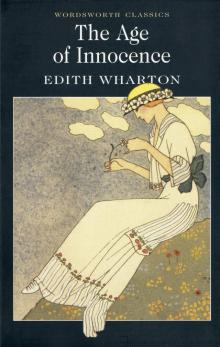 The Age of Innocence
The Age of Innocence The Reef
The Reef Summer
Summer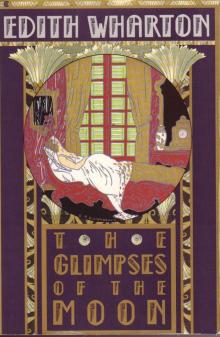 The Glimpses of the Moon
The Glimpses of the Moon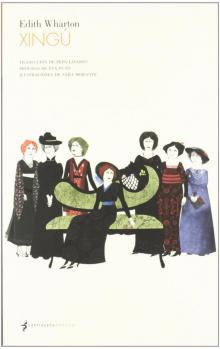 Xingu
Xingu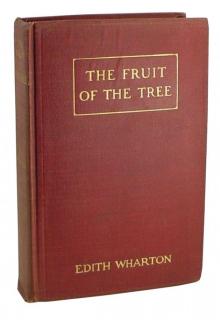 The Fruit of the Tree
The Fruit of the Tree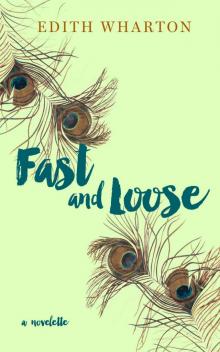 Fast and Loose
Fast and Loose Artemis to Actaeon and Other Verse
Artemis to Actaeon and Other Verse The Line of Least Resistance
The Line of Least Resistance The Lamp of Psyche
The Lamp of Psyche The Reckoning
The Reckoning Afterward
Afterward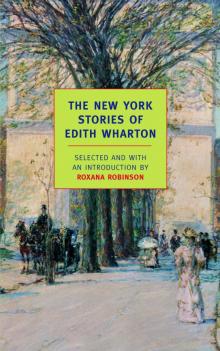 The New York Stories of Edith Wharton
The New York Stories of Edith Wharton The 2014 Halloween Horrors Megapack
The 2014 Halloween Horrors Megapack 'Copy': A Dialogue
'Copy': A Dialogue The Recovery
The Recovery The Fulness of Life
The Fulness of Life Early Short Stories Vol. 1
Early Short Stories Vol. 1 Tales of Men and Ghosts
Tales of Men and Ghosts The House of the Dead Hand
The House of the Dead Hand That Good May Come
That Good May Come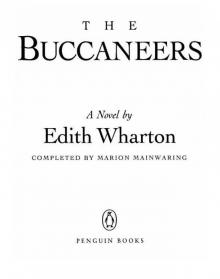 The Buccaneers
The Buccaneers Other Times, Other Manners
Other Times, Other Manners The Hermit and the Wild Woman
The Hermit and the Wild Woman Kerfol
Kerfol The Duchess at Prayer
The Duchess at Prayer Bunner Sisters
Bunner Sisters The Choice
The Choice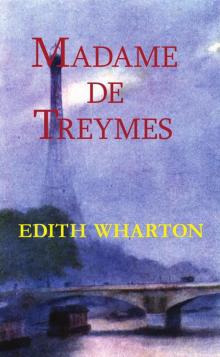 Madame De Treymes
Madame De Treymes Ethan Frome, Summer, Bunner Sisters
Ethan Frome, Summer, Bunner Sisters In Morocco
In Morocco The Valley of Decision
The Valley of Decision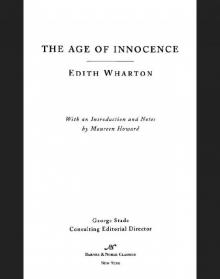 Age of Innocence (Barnes & Noble Classics Series)
Age of Innocence (Barnes & Noble Classics Series) The Angel at the Grave
The Angel at the Grave April Showers
April Showers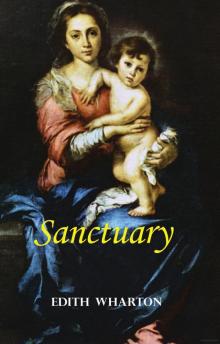 Sanctuary
Sanctuary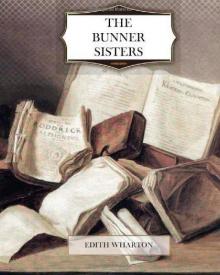 The Bunner Sisters
The Bunner Sisters Mrs. Manstey's View
Mrs. Manstey's View Writing a War Story
Writing a War Story The Custom of the Country
The Custom of the Country In Trust
In Trust The Triumph of the Night
The Triumph of the Night The Hermit and the Wild Woman, and Other Stories
The Hermit and the Wild Woman, and Other Stories Roman Fever and Other Stories
Roman Fever and Other Stories The Mission of Jane
The Mission of Jane The Descent of Man and Other Stories
The Descent of Man and Other Stories Coming Home
Coming Home The Touchstone
The Touchstone Early Short Stories Vol. 2
Early Short Stories Vol. 2 Edith Wharton's Verse, 1879-1919, from various journals.
Edith Wharton's Verse, 1879-1919, from various journals.